Navigating the digital marketing landscape in healthcare can be challenging, especially with the need to comply with HIPAA regulations. Healthcare marketers must effectively target both existing and new customers while ensuring their methods are HIPAA-compliant. Adding to the complexity, major digital marketing platforms refuse to handle Protected Health Information (PHI) or enter into business associate agreements with HIPAA-regulated entities. Here are some strategies healthcare marketers can use to overcome these obstacles and thrive in this evolving environment.
Lay the groundwork
Before diving in head-first, it’s essential to ensure you have the right tools and foundational elements in place:
- Articulated differentiator: Clearly define why patients should choose your brand over competitors. Highlight your unique value proposition and the specific benefits you offer.
- Understand patient pain points: Gain a deep understanding of your patients’ pain points and motivations. Reflect these insights in your messaging, emphasizing the problems your organization solves and how you uniquely address their needs.
- Defined target audience: Identify the cultural and media forces that influence your patients. Understand how they currently interact with your brand to tailor your strategies accordingly.
Although challenging, healthcare marketers can still maintain a competitive edge by implementing a few key tactics. Here are some effective ways to help you develop a robust digital marketing plan:
Create a HIPAA-complaint integration with your CDP
The most effective solution for healthcare marketing on digital platforms is to establish a HIPAA-compliant integration point between your CRM or customer data platforms (CDPs) and the digital marketing platforms. This integration should prioritize removing any PHI before data is transferred or accessed by these platforms, thereby ensuring that the marketing activities fall outside the scope of HIPAA and remain “HIPAA-free.” By prioritizing this integration, you can maintain a seamless connection with your brand’s technology infrastructure, ensuring business continuity without compromising data privacy and security.
Why is this crucial? Digital platforms are often reluctant to accept PHI or become business associates for entities under HIPAA. Healthcare marketers can mitigate the risk of violating HIPAA and HHS regulations by marketing to individuals in ways not regulated by HIPAA. Building your CRM/CDP to exclude all PHI from integrations with digital platforms is essential for maintaining a “business as usual” approach in a regulated environment.
*Rise offers a robust list of digital solutions that can help integrate seamlessly with your brand’s technology to prevent sharing PHI.*
While the implementation process may be lengthy, joining hands with partners like Rise makes this process seamless. In addition to ensuring compliance and security, digital marketing through an integrated approach can provide valuable, quick and seamless insights into customer behavior and preferences. This enables more targeted marketing efforts and improves customer engagement and satisfaction. After all, it starts with your audience. To effectively find and reach your audience using an evolved set of levers, establish a framework that incorporates available and impactful data sources.
Reimagine remarketing
If establishing a HIPAA-compliant integration with a digital platform partner is not immediately feasible but planned for the future, pivoting your strategy to a reimagined version of remarketing can be highly beneficial. Users who have previously been exposed to ads are more likely to convert, making remarketing a proven and effective strategy. However, with increasingly tight restrictions on traditional remarketing in healthcare, it’s essential to explore innovative tactics to drive performance across platforms, targeting, and creative. Here’s how healthcare brands can achieve this:
- Maximize audiences: Leverage existing audience data to create highly targeted campaigns. Use insights and signals from previous interactions to tailor your messaging and offers.
- Employ effective lower funnel strategies: Focus on strategies that target users closer to the point of conversion. This could include personalized offers, reminders
,or exclusive deals to encourage them to take the final step.
- Innovate across channels and platforms: Experiment with different channels and platforms to ensure you’re reaching your audience wherever they are.
- Optimize creative assets: Continuously test, refresh and optimize your creative assets to keep your audience engaged. Use interactive content, personalized messaging
,and compelling visuals to make your ads stand out.
Start in-platform
Creating video assets tailored to specific audience segments can significantly enhance engagement. By developing targeted video campaigns, brands can generate dedicated audiences and build remarketing lists to guide users further down the funnel. These videos should be engaging, provide value, and feature clear calls to action to increase the likelihood of viewers taking desired steps.
Use first-party CRM data
Leveraging de-identified first-party CRM data enables more precise audience targeting. By building lookalike segments from CRM lists, brands can reach new potential customers who exhibit similar behaviors and interests as existing ones. Regularly refreshing CRM lists to match specific campaign goals ensures that targeting remains relevant and effective.
Invest in acquiring new zero-party data
Campaigns can be designed with the specific goal of acquiring new zero-party data. Despite new limitations on data collection, healthcare brands can still gather valuable information through online surveys, feedback forms, and website interaction tools. This approach helps collect data directly from consumers, enhancing targeting precision and the overall effectiveness of marketing efforts.
Measure performance
Dynamic adaptation and optimization of strategies are crucial in response to the ever-changing industry landscape. Rise’s media optimization platform, Connex®, plays a pivotal role in measuring and understanding performance. Connex empowers brands to integrate across diverse channels while intricately measuring, mapping, and analyzing a wide range of KPIs across various stages of the sales funnel.

To enhance the decision-making process, Connex provides all the data points needed to perform daily optimizations, incrementality or correlation analyses. These analytical approaches offer a deep dive into a campaign’s effectiveness, providing valuable insights to inform strategic optimizations. By understanding the nuanced impact of media investments, healthcare brands can make informed decisions on where to allocate their advertising budget effectively across channels, ensuring maximum returns and sustained relevance in the ever-evolving market landscape.
Adjusting to the new normal
There you have it! While healthcare brands are still adapting their marketing strategies to align with regulatory changes, numerous avenues remain to ensure you effectively reach your target audiences. Rise is here to help with all your healthcare marketing needs. Contact us now to learn more.




